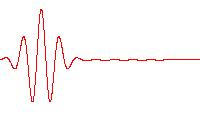Using my iPhone, I would like to measure human flatulence in order to measure, quantify, and provide a statistical report based on various properties of the overall event quality. Outrageous, maybe. Fun, definitely. If I'm going to "release" an iPhone app, I want to do it in style. That's right, I want to measure farts/stinkers/toots.
So that bring's me to my question,
In order to provide an extremely accurate analysis, at a very minimum, I would need to be able to measure a propagating wave packet, specifically one that would measure the envelope of a burst, distance between adjacent peaks, momentum, and velocity.
A propagating Wave Packet

As I am no sound expert of sound analysis, I was wondering if there are development libraries available for sound analysis that would provide a robust set of tools with the qualifications as I mentioned above?
For those scope-creepers out there, your ideas are welcome, however, leave ideas only as comments, as I am seriously looking for an answer to my issue.
Note I am aware of other flatulence measuring applications, which measure purely on the volume and length of the event, but none that would provide the level of quality I am looking for in this ground/wind-breaking application.
Note 2 I'm absolutely, 100%, serious.